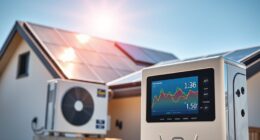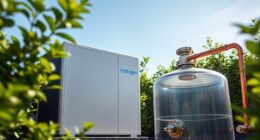Get ready to access unparalleled energy savings!
Join us as we dive into the world of heat pump efficiency ratings and discover the key to maximizing your energy efficiency.
Just like a well-oiled machine, understanding SEER, HSPF, EER, and COP ratings will help you make informed decisions and save money.
So, buckle up and get ready to harness the power of heat pump efficiency ratings to serve yourself and the planet.

Key Takeaways
- Heat pump efficiency ratings, such as HSPF and SEER, measure the conversion of energy into heat or cool air.
- Higher HSPF and SEER ratings indicate greater energy efficiency, leading to significant energy savings and lower costs.
- Understanding SEER is important for maximizing energy savings in cooling mode, while HSPF measures heating efficiency.
- Proper installation, regular maintenance, and implementing energy-saving techniques can further optimize heat pump efficiency and enhance energy savings.
What Are Heat Pump Efficiency Ratings
We’ll start by explaining the basics of heat pump efficiency ratings.
Heat pump efficiency ratings measure how effectively a heat pump can convert energy into heat or cool air. These ratings are expressed in terms of Heating Seasonal Performance Factor (HSPF) for heating mode and Seasonal Energy Efficiency Ratio (SEER) for cooling mode.
The higher the HSPF and SEER ratings, the more energy efficient the heat pump is. Heat pump efficiency benefits are significant, as they can lead to substantial energy savings.
Understanding SEER: The Key to Energy Savings
When it comes to understanding SEER, it’s important to distinguish between SEER and energy efficiency. SEER stands for Seasonal Energy Efficiency Ratio and is a measure of the cooling efficiency of a heat pump.
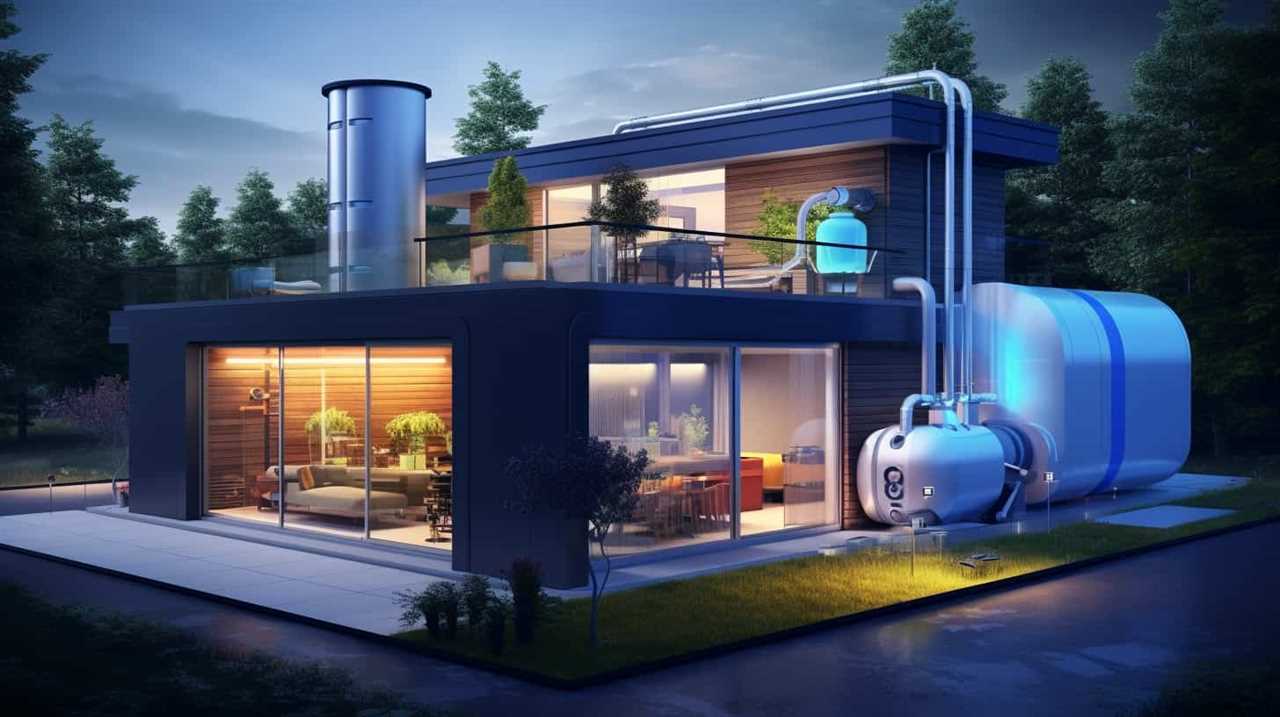
Higher SEER ratings indicate greater energy savings and lower operating costs. To maximize heat pump efficiency, it’s crucial to choose a unit with a high SEER rating that’s suitable for your specific cooling needs.
SEER Vs. Energy Efficiency
Our understanding of SEER is essential for maximizing energy savings and choosing the most efficient heat pump. SEER, or Seasonal Energy Efficiency Ratio, is a measure of the cooling efficiency of a heat pump. It represents the amount of cooling output divided by the energy input over an entire cooling season. A higher SEER rating indicates better energy efficiency and potential for greater energy savings. However, it is important to note that SEER alone does not provide a complete picture of a heat pump’s overall energy efficiency. Other factors, such as HSPF (Heating Seasonal Performance Factor) and COP (Coefficient of Performance), also play a role in heat pump performance. By considering these additional factors along with SEER, homeowners can make informed decisions to maximize their heat pump efficiency and achieve significant energy savings.
| SEER Rating | Energy Efficiency | Potential Energy Savings |
|---|---|---|
| 14 | Good | Moderate |
| 18 | Better | High |
| 20 | Excellent | Maximum |
Transitioning into the subsequent section about ‘maximizing heat pump efficiency’, it is important to consider additional factors that can further enhance energy savings.
Maximizing Heat Pump Efficiency
To maximize heat pump efficiency and achieve significant energy savings, homeowners can focus on understanding SEER, which is the key to unlocking energy savings.
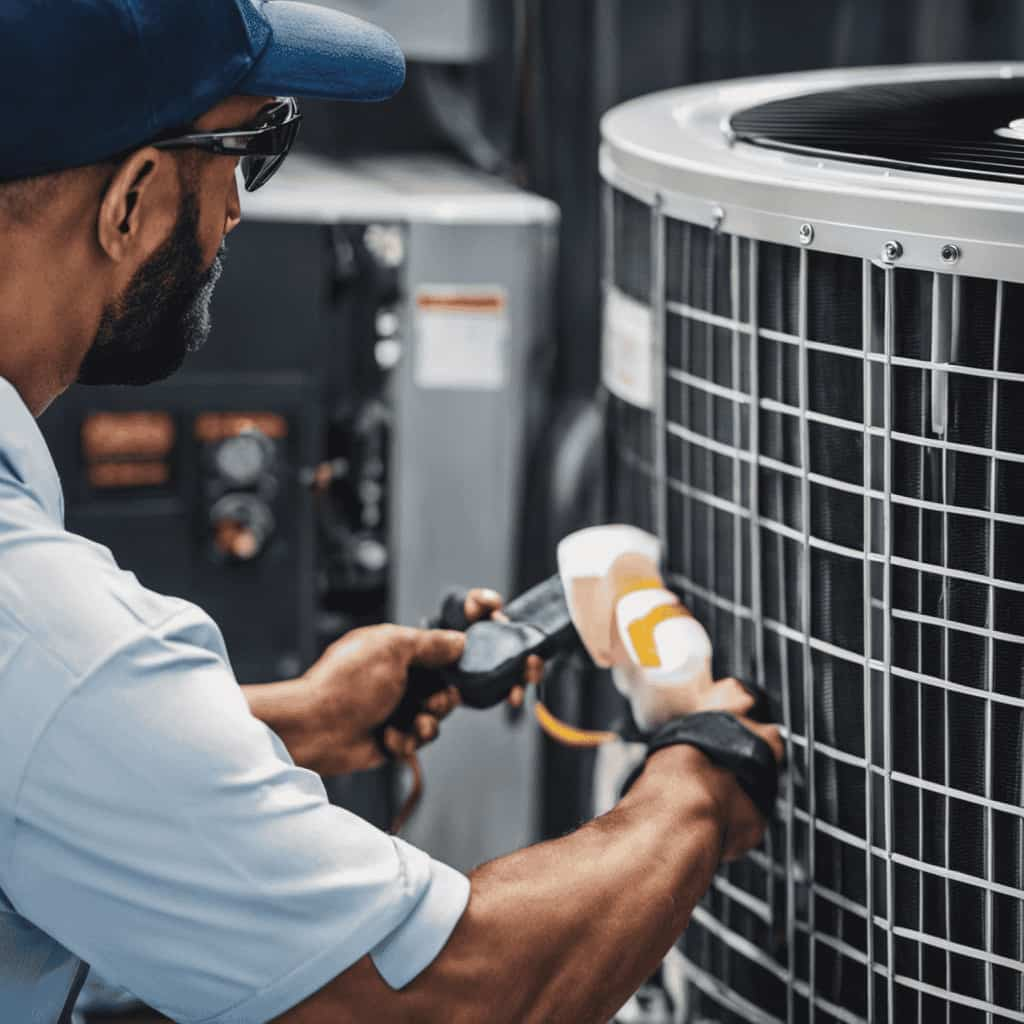
SEER, or Seasonal Energy Efficiency Ratio, is a measure of how efficiently a heat pump operates over an entire cooling season. The higher the SEER rating, the more efficient the heat pump.
To improve performance and save energy, homeowners can implement various energy-saving techniques.
First, proper installation and regular maintenance are crucial. Ensuring the heat pump is correctly sized and installed by a qualified technician will optimize its efficiency. Additionally, regular maintenance, such as cleaning or replacing filters, checking refrigerant levels, and cleaning coils, will help the heat pump operate at peak performance.
Other energy-saving techniques include proper insulation, sealing ductwork, and using programmable thermostats to regulate temperature settings.
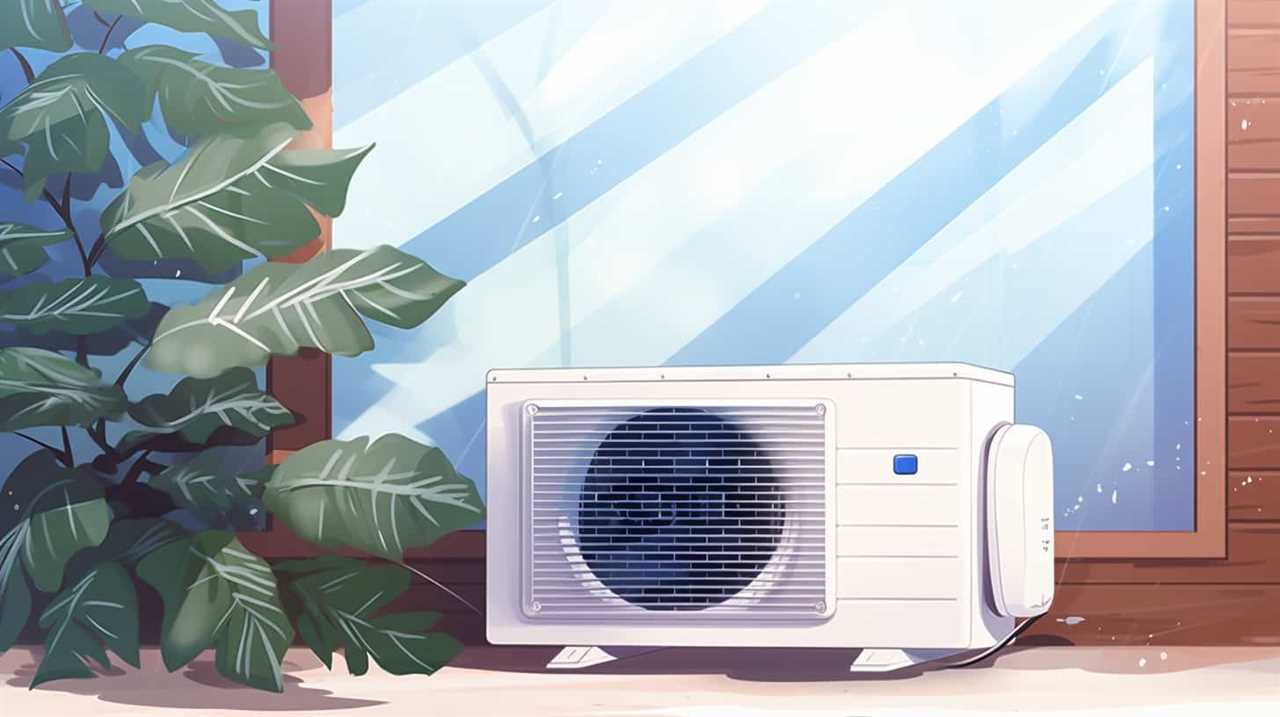
HSPF: The Measure of Heating Efficiency
When it comes to heat pump efficiency, it’s important to understand the difference between HSPF and SEER.
While SEER measures the cooling efficiency of a heat pump, HSPF measures its heating efficiency.
HSPF, or Heating Seasonal Performance Factor, is a measure of how efficiently a heat pump provides heat over an entire heating season.
HSPF Vs SEER: Comparing Efficiency
Comparing efficiency, we examine the Heating Seasonal Performance Factor (HSPF) as the measure of heating efficiency. When evaluating heat pump efficiency, it’s important to understand how HSPF compares to another commonly used rating, the Seasonal Energy Efficiency Ratio (SEER).
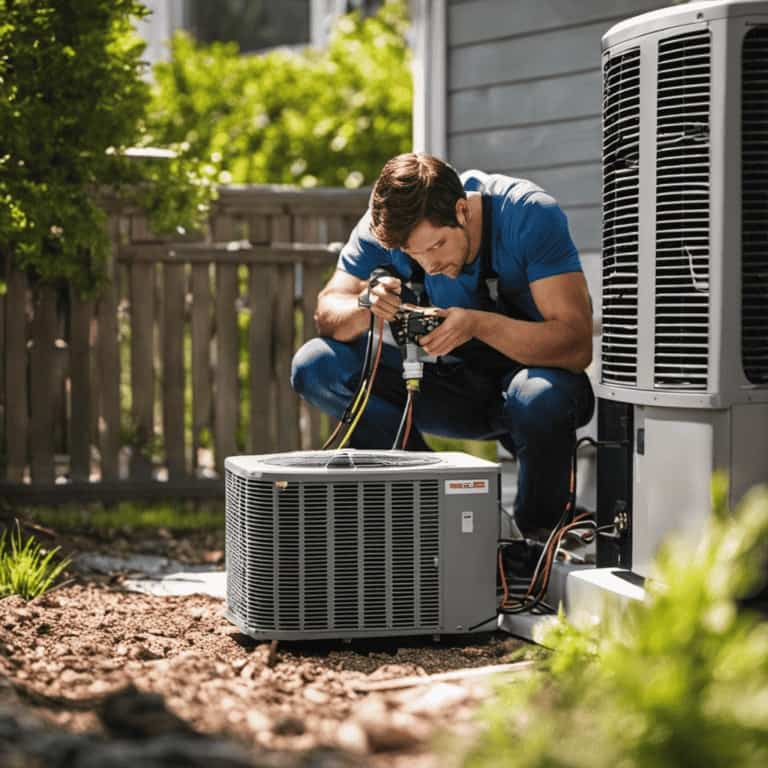
While SEER measures the cooling efficiency of a heat pump, HSPF focuses specifically on its heating efficiency. HSPF takes into account both the energy consumed during the heating season and the heating capacity provided. It’s calculated by dividing the total heating output by the total electrical energy input.
In comparison, the Coefficient of Performance (COP) measures the ratio of heating output to electrical input at a specific point in time. Understanding the difference between HSPF and COP allows consumers to make informed decisions when selecting a heat pump based on their heating efficiency needs.
Transitioning into the next section, let’s explore the importance of HSPF in more detail.
Importance of HSPF
We recognize the importance of HSPF as it measures the heating efficiency of a heat pump. HSPF stands for Heating Seasonal Performance Factor and it is a rating that indicates how efficiently a heat pump can heat a home. The higher the HSPF rating, the more efficient the heat pump is at converting electricity into heat. This means that a heat pump with a high HSPF can provide more heat using less energy, resulting in lower energy bills and reduced environmental impact.
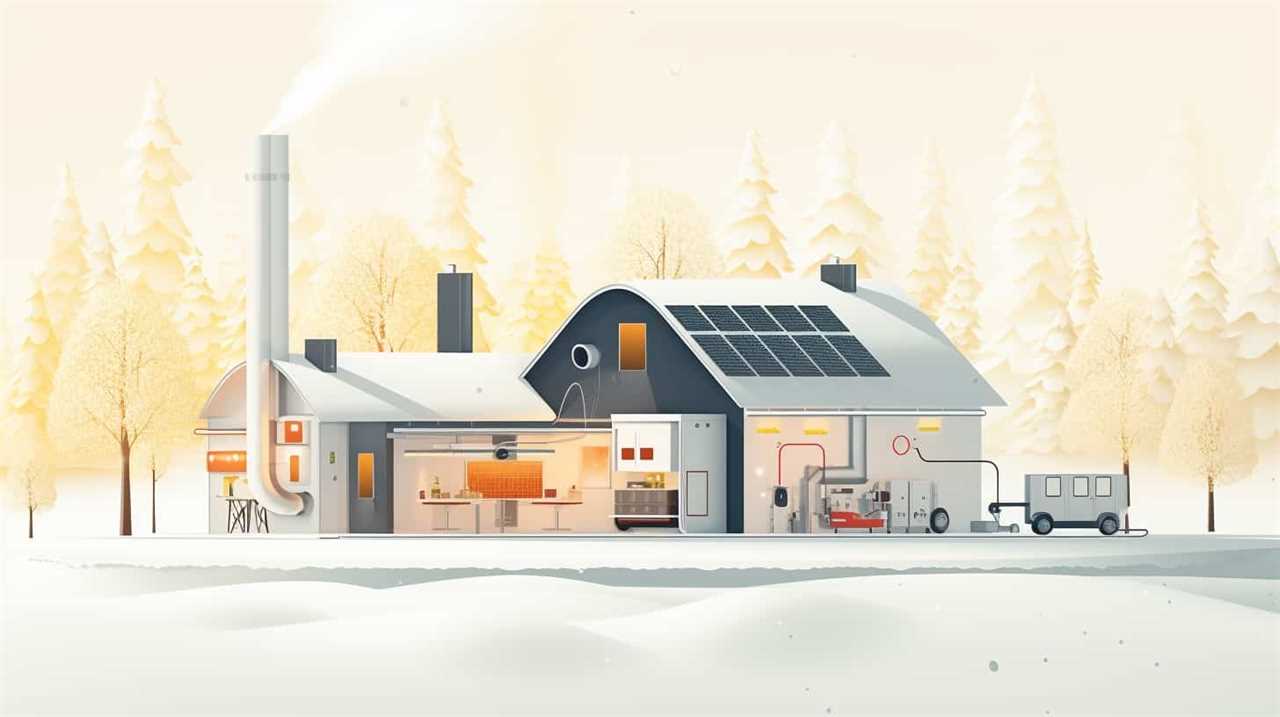
To further understand the importance of HSPF, let’s compare it with another efficiency rating called COP (Coefficient of Performance). While COP measures the heating or cooling output divided by the energy input, HSPF takes into account the energy efficiency of a heat pump over an entire heating season, including periods of milder temperatures.
A high HSPF offers several benefits. Firstly, it reduces energy consumption, leading to cost savings and lower utility bills. Additionally, it helps to minimize carbon emissions and contribute to a more sustainable environment. Lastly, a heat pump with a high HSPF can provide consistent and comfortable heating throughout the winter season, ensuring optimal comfort for homeowners.
To illustrate this, here is a comparison table of different HSPF ratings and their corresponding levels of efficiency:
| HSPF Rating | Efficiency Level |
|---|---|
| 6-7 | Standard |
| 8-9 | High |
| 10-11 | Very High |
| 12 and above | Excellent |
EER: The Importance of Cooling Efficiency
Improving cooling efficiency is crucial for maximizing energy savings and reducing utility costs. When it comes to measuring cooling efficiency, the Energy Efficiency Ratio (EER) is an important metric to consider. The EER is calculated by dividing the cooling capacity of a system by the power input.
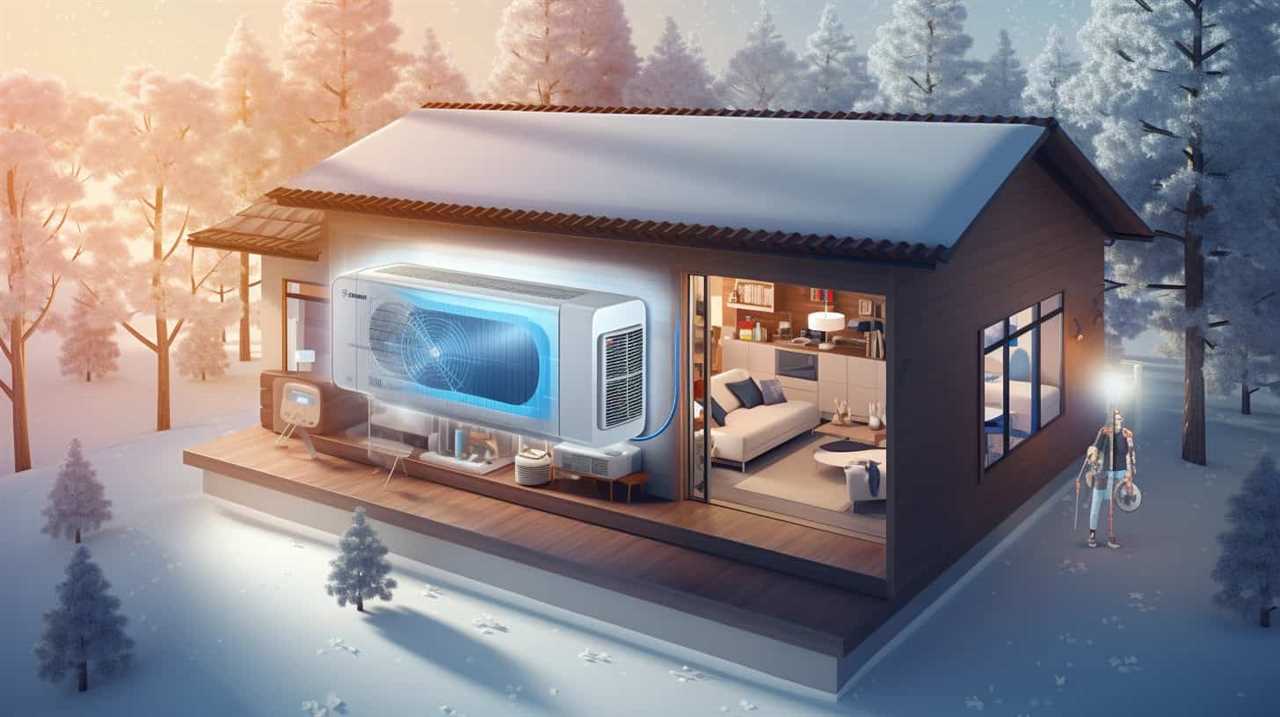
Here are five key points to understand about the importance of EER in cooling efficiency:
- EER provides an objective measurement of how efficiently a cooling system operates.
- Higher EER ratings indicate better energy efficiency and lower operating costs.
- Choosing a cooling system with a high EER can result in significant long-term savings.
- The impact of climate on cooling efficiency should be considered when selecting a system.
- In warmer climates, a higher EER is especially important to maintain efficient cooling while reducing energy consumption.
COP: Assessing Heat Pump Performance
One key factor in assessing heat pump performance is the coefficient of performance (COP), which quantifies the efficiency of the heat pump in converting energy input into heat output. The COP is a ratio of the heat output to the energy input, and a higher COP indicates a more efficient heat pump.
When assessing COP, it’s important to compare it to the Seasonal Energy Efficiency Ratio (SEER), which measures the cooling efficiency of the heat pump. While SEER focuses on cooling performance, COP provides a comprehensive measure of both heating and cooling efficiency.
By comparing COP and SEER, homeowners can make informed decisions about the overall efficiency of their heat pump system. Understanding the relationship between COP and SEER is crucial when evaluating heat pump performance and making energy-saving choices.
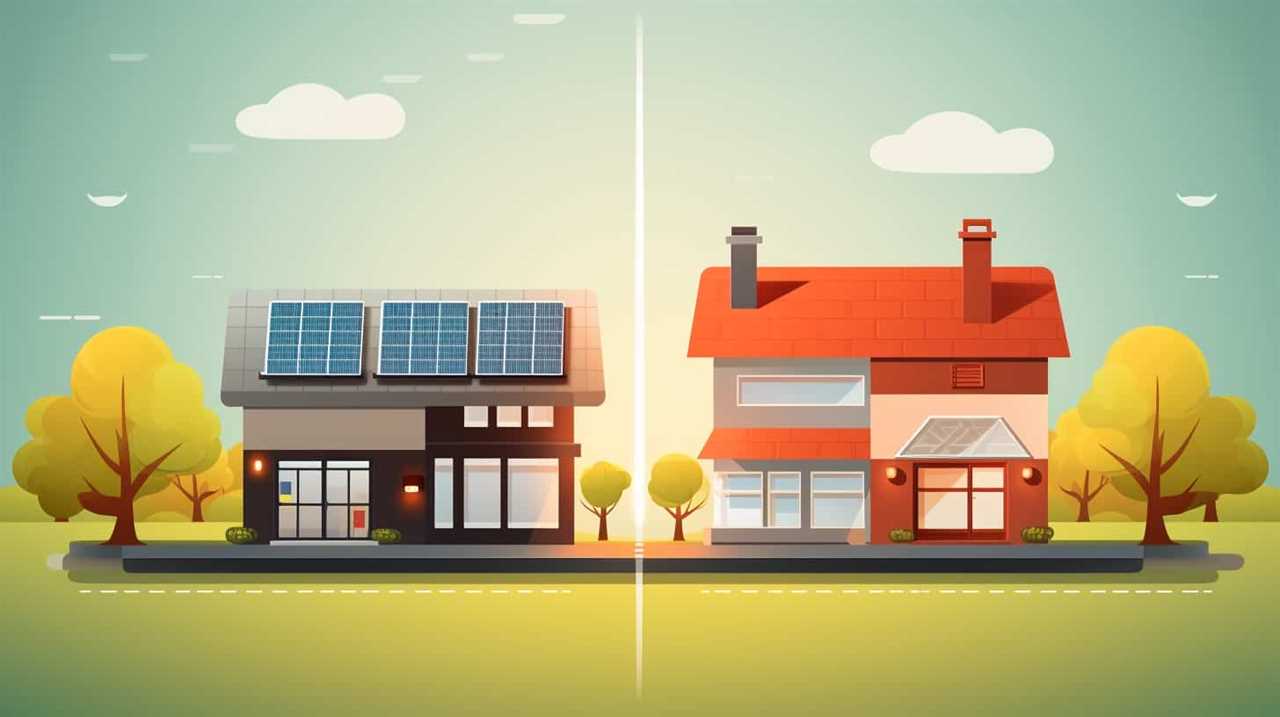
Now, let’s explore the factors that affect heat pump efficiency ratings.
Factors Affecting Heat Pump Efficiency Ratings
Understanding the factors that impact heat pump efficiency ratings is essential for maximizing energy savings. Here are five key factors to consider:
-
Heat Pump Maintenance: Regular maintenance, such as cleaning filters and checking refrigerant levels, is crucial for ensuring optimal efficiency. Neglecting maintenance can lead to reduced performance and higher energy consumption.
-
Weather Conditions: Heat pump efficiency is influenced by the outdoor temperature. In colder weather, heat pumps may have to work harder to extract heat from the air, reducing their efficiency. It’s important to choose a heat pump with a high Heating Seasonal Performance Factor (HSPF) for colder climates.
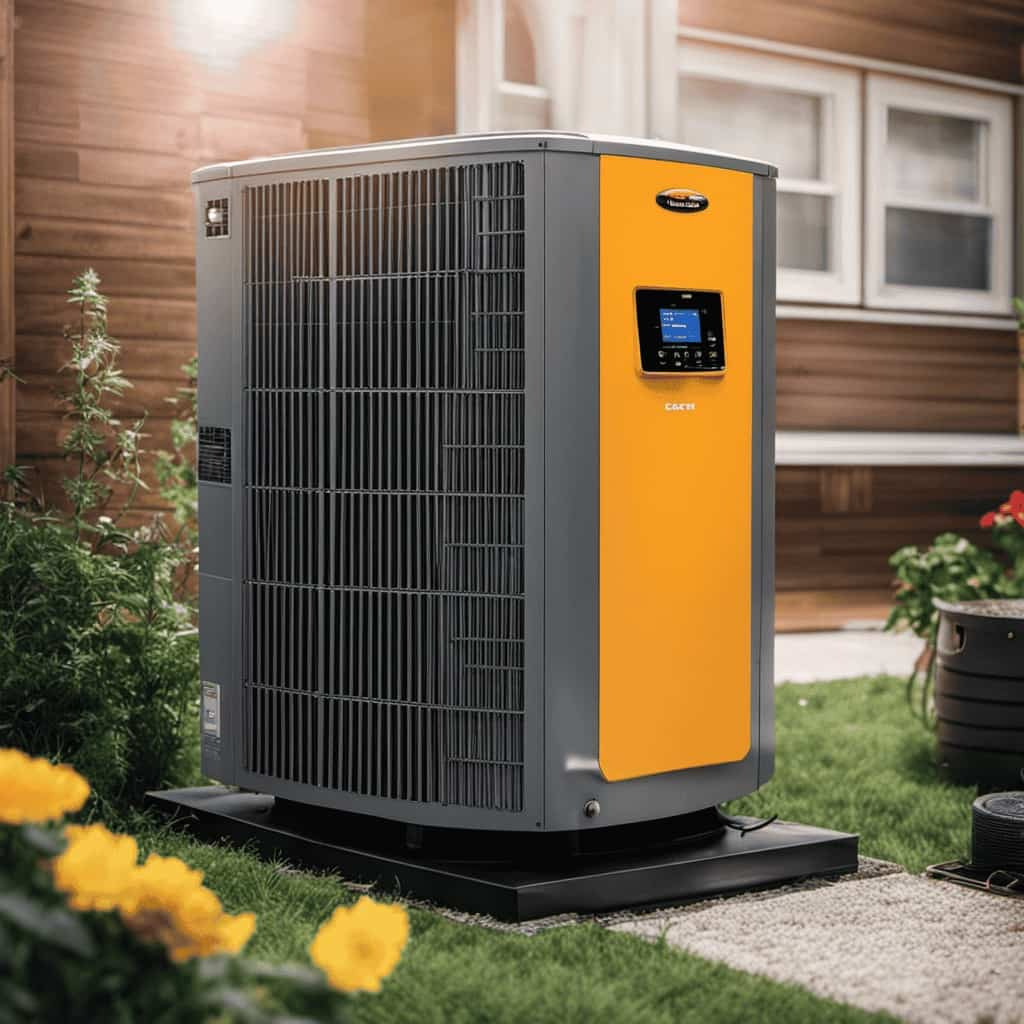
-
Insulation: Proper insulation in the home helps to minimize heat loss and maintain a consistent indoor temperature. Good insulation reduces the workload on the heat pump, improving its efficiency.
-
Sizing: Ensuring the heat pump is properly sized for the space it needs to heat or cool is crucial. An oversized or undersized unit may result in inefficient operation and increased energy consumption.
-
Location: The location of the heat pump can affect its efficiency. Avoid placing it in areas with direct sunlight or excessive airflow, as this can impact its performance.
Frequently Asked Questions
Can a Heat Pump Be Used as the Sole Heating and Cooling System for a Home?
Yes, a heat pump can be used as the sole heating and cooling system for a home. It offers numerous benefits such as energy savings and requires regular maintenance to ensure optimal performance.
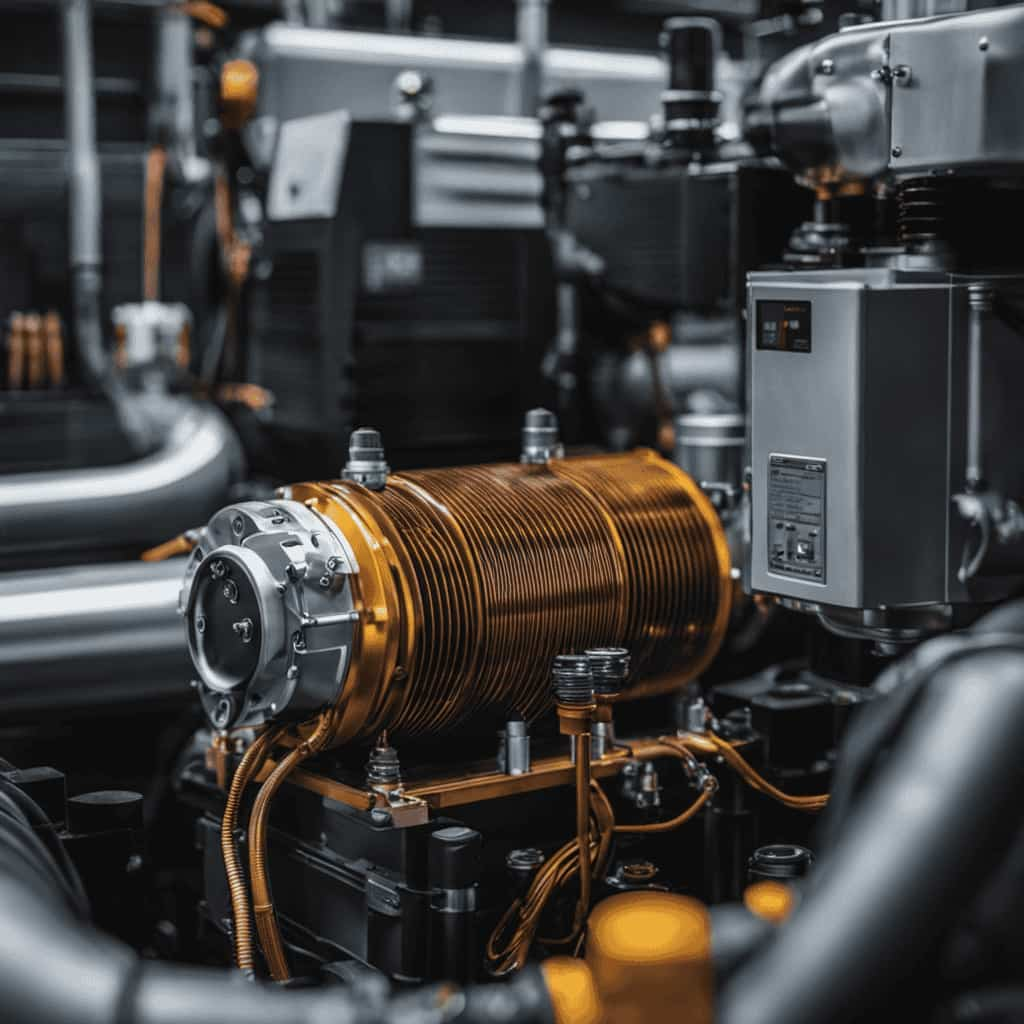
How Does the Size of a Heat Pump Affect Its Efficiency?
The size of a heat pump has a significant impact on its efficiency and energy consumption. Proper heat pump sizing ensures optimal performance, minimizing energy waste while maximizing comfort and savings for homeowners.
Are There Any Government Incentives or Rebates Available for Installing a High-Efficiency Heat Pump?
Yes, there are government incentives and rebates available for installing a high-efficiency heat pump. These programs aim to promote energy savings and make it more affordable for homeowners to upgrade their systems.
Is It Possible to Retrofit an Existing HVAC System With a Heat Pump?
Yes, it is possible to retrofit an existing HVAC system with a heat pump. The retrofitting process involves installing the heat pump and making necessary modifications. Cost considerations include equipment costs and installation expenses.
Can a Heat Pump Be Used in Extremely Cold Climates?
Yes, a heat pump can be used in extremely cold climates. We have found that the key to heat pump performance in these conditions is proper installation, regular heat pump maintenance, and selecting a model with a high Heating Seasonal Performance Factor (HSPF).
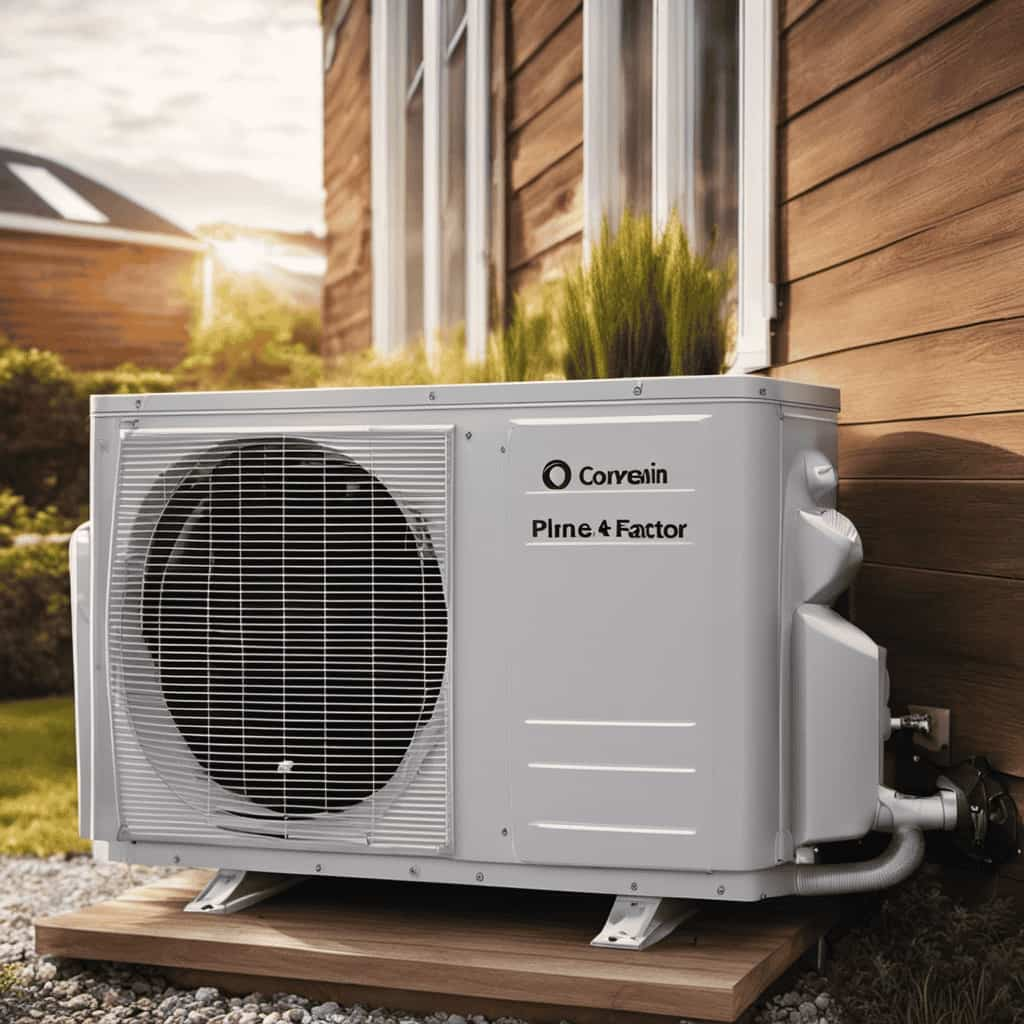
Conclusion
In conclusion, understanding heat pump efficiency ratings is crucial for unlocking energy savings. By considering factors such as SEER, HSPF, EER, and COP, homeowners can make informed decisions about their heating and cooling systems.
So, why settle for inefficiency when you can maximize energy savings and reduce environmental impact?







